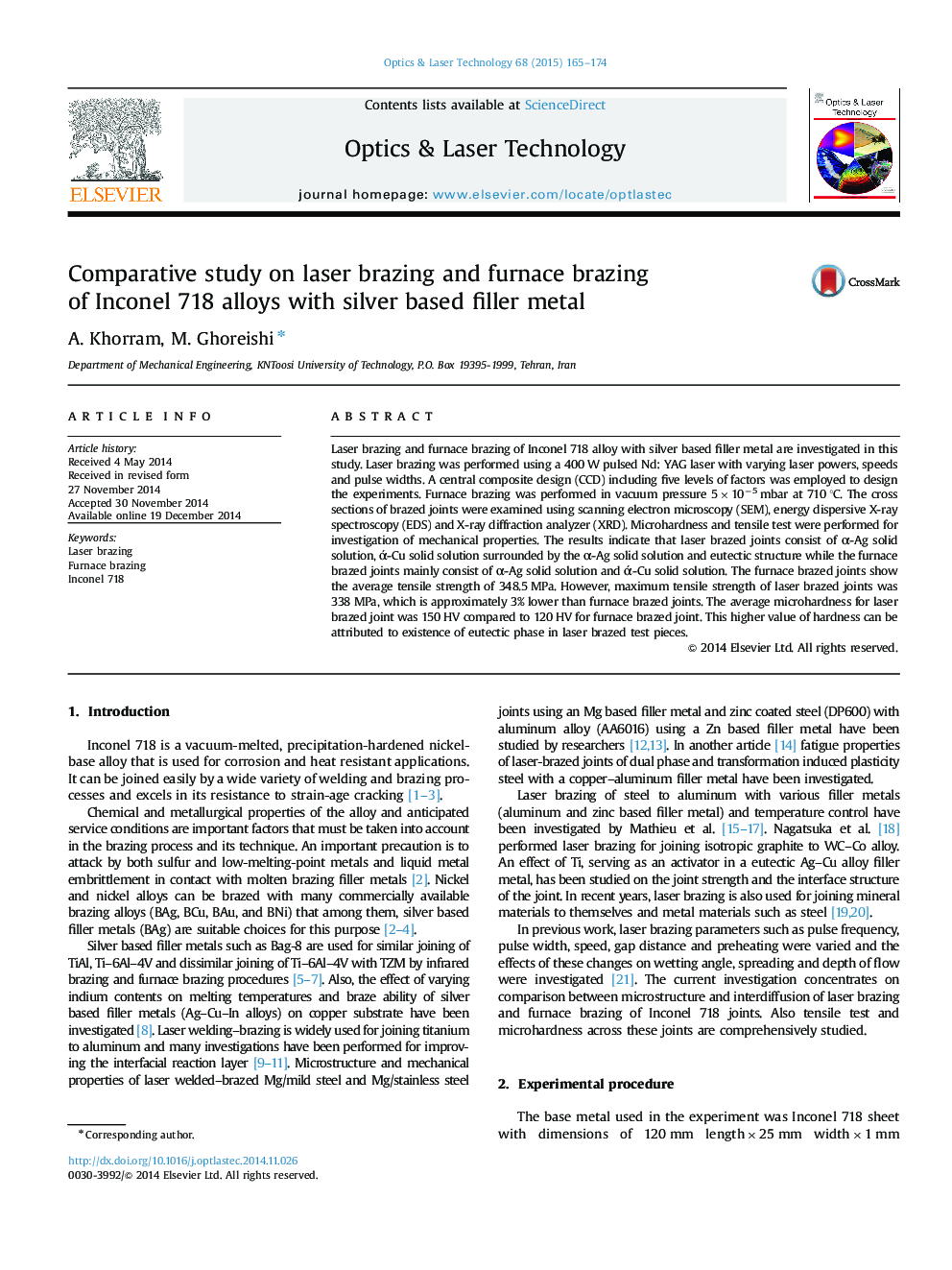| Article ID | Journal | Published Year | Pages | File Type |
|---|---|---|---|---|
| 733299 | Optics & Laser Technology | 2015 | 10 Pages |
•Microstructure and mechanical properties of laser and furnace brazing are compared.•In laser brazing, the average thickness of reaction layer is approximately 2.5 μm.•The average thickness of reaction layer in furnace brazing is approximately 4.5 μm.•For the laser brazed specimens, α-Ag, ά-Cu and eutectic phase are observed.•α-Ag and ά-Cu solid solutions are dominated phase in furnace brazed samples.
Laser brazing and furnace brazing of Inconel 718 alloy with silver based filler metal are investigated in this study. Laser brazing was performed using a 400 W pulsed Nd: YAG laser with varying laser powers, speeds and pulse widths. A central composite design (CCD) including five levels of factors was employed to design the experiments. Furnace brazing was performed in vacuum pressure 5×10−5 mbar at 710 °C. The cross sections of brazed joints were examined using scanning electron microscopy (SEM), energy dispersive X-ray spectroscopy (EDS) and X-ray diffraction analyzer (XRD). Microhardness and tensile test were performed for investigation of mechanical properties. The results indicate that laser brazed joints consist of α-Ag solid solution, ά-Cu solid solution surrounded by the α-Ag solid solution and eutectic structure while the furnace brazed joints mainly consist of α-Ag solid solution and ά-Cu solid solution. The furnace brazed joints show the average tensile strength of 348.5 MPa. However, maximum tensile strength of laser brazed joints was 338 MPa, which is approximately 3% lower than furnace brazed joints. The average microhardness for laser brazed joint was 150 HV compared to 120 HV for furnace brazed joint. This higher value of hardness can be attributed to existence of eutectic phase in laser brazed test pieces.
